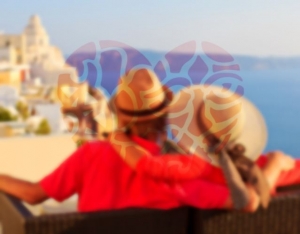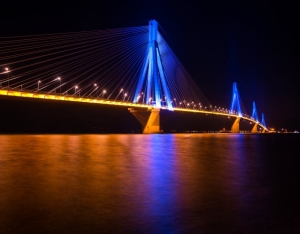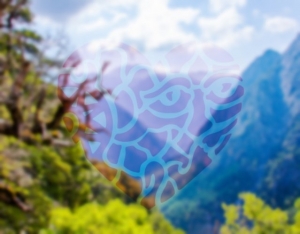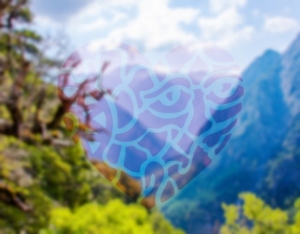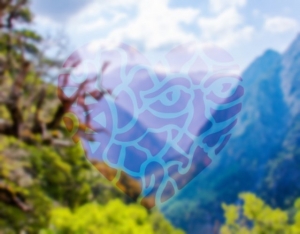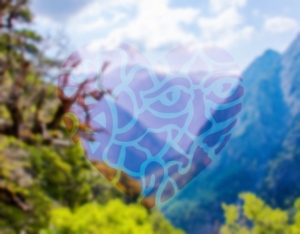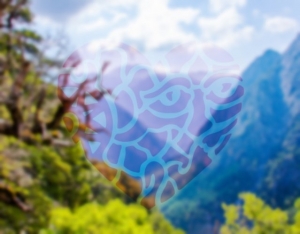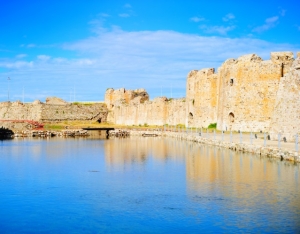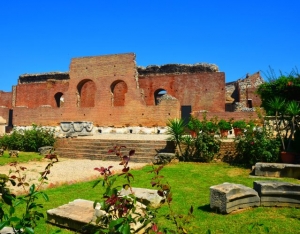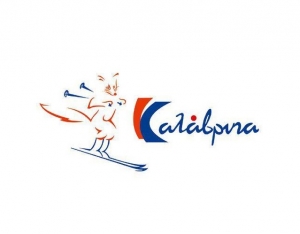Thodoris Bgenopoulos
Achaia Clauss Winery is situated in Petroto, under the mountain Panachaiko and 8 km from the center of Patras.
The history of Achaia Clauss starts in the 19th century, when the Bavarian Gustav Clauss, impressed from Patras and the vineyards of the region, decided to set up wineries. He acquires an area at the foot of Panachaiko and there gradually creates a the wine village with impressive stone towers and buildings. So starting in 1861, the Achaia Clauss winery prides itself to be the oldest winery in Greece.
In 1873 the famous wine Mavrodaphne is created in Achaia Clauss, a sweet and strong wine that was immediately loved both in Greece and abroad. A barrel of this 1873 first wine, perhaps the oldest wine of Greece, is kept until today in the cellars of the winery. Mavrodaphne and other excellent wines of Achaia Clauss, quickly established it as an outstanding winery in the minds of consumers.
From 1920 onwards, the winery passed into Greek hands continuing to grow dynamically. Today Achaia Clauss, besides being a major winery, also performs cultural work. In its architecturally impressive buildings and other sites, conferences are organized together with exhibitions and cultural or social events.
More information about Achaea Klaus can be found in http://www.clauss.gr and the number 2610 580100.
The Rio-Antirrio bridge is just out of Patras, in Rio area.
The Rio-Antirrio bridge connects Rio and the region of Peloponnese with Antirrio and the region of Etoloakarnania. passing through the Corintian gulf.
The bridge is cabled with a total length of 2252 m (together with access bridges that reach 2883 meters) and is supported by four massive pillars. The strength of the bridge is impressive, being constructed to withstand the most extreme natural phenomena. On the sides of the bridge there is pedestrian and cycle route for those who want to live the experience of walking or cycling in such a height.
The official name of the bridge is bridge "Charilaos Trikoupis" in honor of the Prime Minister of Greece who first envisioned the construction, from the late 19th century.
The bridge was completed in 2004 and from the first moment it improved greatly the communication between the Peloponnese and mainland Greece, which until then was carried out only with ships and of course significant delay (only few of them still exist).
Apart from its transportation role, the Rio-Antirrio bridge is also a major attraction. Especially at night when lit, it offers an impressive spectacle. It is a must-see, and if you like walking you ought it to yourself to cross it on foot.
More information concerning the Rio-Antirrio Bridge can be found in http://www.gefyra.gr and the number 26340 39010.
In the northeastern part of Achaea you can find the mount Helmos.
Helmos (less known by the ancient name Aroania Mountains) is the third highest mountain in the Peloponnese, after Taygetos and Kyllini. The highest point of Helmos is Psili Koryfi (High Peak) in 2335 m. Other peaks of Helmos is Neraidorahi (2,340 meters), the Prophet Elias (2,238 meters), Gardiki (2,182 meters), Avgo (Egg) (2138 meters) and Nisi (2,042 meters).
In Helmos at 800 meters altitude lies the Tsivlou lake, created after a natural landslide in the riverbed Karthi (800 m.), while near the mountain's peaks the seasonal lake Mavrolimni is formed from melting snow.
Myth has is that Styga, one of the rivers that flew into Hades, stemmed from Helmos mountain. The ancient took oath in its sacred waters and its violation ensued terrible punishment. According to Homer, Thetis plunged the mythical hero Achilles into Styga in order to make him immortal, leaving only the point of the heel from which she held him vulnerable (where he was eventually injured by arrow and killed).
Helmos is ideal for hiking and climbing, being at certain points so rough that it constitutes a challenge even for the most experienced climbers.
In northern Achaea you can find the mount Panachaiko.
Panachaiko owns its name to the region of Achaea, since from ancient times it belongs to it. Due to its location, right above the city of Patras, it is also known as Patras mount. Its highest peak is in 1928 m and is called Pyrgos tou Palavou, which in greek means Mad-man's Tower. It is said that it took the particular name from someone who tried to built a house there. Other peaks in Panachaiko are Vodias, (1836 meters), Vouno tou Giorgi --translated as the Mount of George-- (1804 meters), Barbas (1613 meters ) and Krania ( 1304 meters).
Panachaiko at its most part is barren with some meadows and forests, mostly in its lower parts.
In Panachaiko two shelters also operate, in Psarthi and Prasoudi. In the northern part of the mountain one of the largest wind farms in Greece operates, having more than 40 wind turbines. If you happen to be a hiking or mountaineering fanatic, Panachaiko is definitely worth visiting.
The famous gore of Vouraikos is situated in the region of Achaea.
The Vouraikos gorge is one of the most beautiful natural landscapes in the entire Greece. It actually follows the bed of the river Vouraikos, which stems from the Priolithos village near Kalavryta and flows into the Gulf of Corinth, near Diakopto.
According to mythology, Hercules opened the gorge so as his beloved Voura, the daughter of Eliki, could pass through and meet with him. This is how the river and the gorge took their name.
The Vouraikos gorge is 20 kilometers long and is characterized by lush vegetation, steep cliffs, caves and waterfalls. The gorge is crossed by Vouraikos river as well as the renowned Cog Railway. Beside the railway line there is a path connecting Diakopto to Kalavryta. Hikers from all over Greece and abroad choose this quite big route (6-8 hours), which is also part of the European path E4, craving to walk on the side lines and enjoy at their own pace the extraordinary beauty of the landscape.
In the northwestern Peloponnese, between the county of Achaea and Ilia is the mount Erymanthos.
Erymanthos is the fourth in height mountain of the Peloponnese and is among the alpine mountains of Greece. Its highest peak is Olenos with altitude 2224 meters that is located in the region of Achaea, almost bordering with Ilia. Other peaks are Mougila (2169 meters), the Prophet Elias (2125 meters), the Pyrgakos (2050 meters), the Neraidovouni (the mountain of the fairies)(1923 meters), the Psili Tourla (1891 meters) and the Lepida (Blade) (1541 meters). From Mount Erymanthos several rivers derive such as Penaeus, the Selinountas, Erymanthos and others.
Erymanthos mountain is characterized by the wild natural surroundings and the dense vegetation with about a thousand different species of plants. The slopes of the 800 m and above are filled with forests reaching in some cases up to 1700 meters, but from then on the mountain is bare, thus creating a spectacular natural contrast.
According to mythology it was here that the famous hero Hercules made one of his labors by killing the Erymanthio Boar. If you are into hiking, mountaineering and climbing in a beautiful setting, you have to pass by Mount Erymanthos.
Spileo ton Limnon is located in the village Kastria, 17 km from Kalavryta.
This cave, Spileo ton Limnon, is unique of its kind , as it has 13 consecutive lakes in multiple levels. According to the findings the cave seems to be inhabited from 6000 BC but in the modern era it was only explored in 1964, while it opened to the public in 1990.
The total length of the cave is about 2 km, but cannot yet be visited throughout. However, the part available to guests compensates due to its unique beauty. Words fail to describe this wonderful spectacle of natural beauty, which can only be grasped in all its grandeur, if watched first hand. The sound of water and the echo of the cave make a unique natural melody that along with the exquisitely lit cave walls create a unique setting.
It goes without saying that when you are in the region, you absolutely must visit Spileo ton Limnon.
More information concerning the Spileo ton Limnon can be found in http://www.kastriacave.gr and the number 26920 31001.
In Patras, on a hill below the Panachaiko mountain is the Medieval Castle of Patras, or just Patras Castle.
The Medieval Castle of Patras was built in the 6th century AD by the Emperor Justinian, in the place where the ancient citadel of Patras used t be. In fact several of the castle's construction materials came from the ruins.
The Medieval Castle of Patras occupied over 22 acres and had six towers, moats and ramparts. The castle was a watchful guard for the wider region and passed successively through the hands of all conquerors. Byzantines, Franks, Venetians, Turks, even Germans during the Second World War settled in the castle, all making their own architectural interventions that stand out today.
It is worth noting that a statue from Roman times is endorsed in the castle walls, having a special significance for Patras; the famous "Patrinela ". According to popular tradition, the statue protected the city from epidemics, and at the terrible event of someone's death, it cried at night.
Today the Medieval Castle of Patras functions as an archaeological site and is ideal for a visit, both for the building and the magnificent views across the region.
The Roman Odeon of Patras is located in Ano Poli, west of Patras Medieval Castle.
According to Pausanias, the conservatory was built before the Theatre of Herodes Atticus (Herodion), although it was not as impressive, probably in the 1st century AD.
We have little knowledge for the period of its operation.
What is certain though, is that over the years the Roman Odeon gradually ceased to function and got covered with soil and buildings. This was its state until 1889, when the filling of the harbor was decided and soil needed to be taken from Strani hill. It is during this work that the almost forgotten conservatory was revealed.
The Roman Odeon was restored in 1956, gaining back its original form. Today the Roman Odeon is active, organizing numerous worth watching events, and its marble stands can accommodate over 2000 spectators.
But even when no event takes place, the Roman Odeon is a beautiful archaeological site and a visit will surely delight you.
The ski center of Kalavryta is just 15 km from Kalavryta, on the slopes of mount Helmos.
The Kalavryta Ski Center is located 191 km from Athens and 93 kilometers from Patras. To get there you have to turn to the 159th kilometer of the New National Road “Athinon – Patron”, at the junction of Kalavryta and Ski Center.
The ski center opened in 1988 and immediately became a favorite destination for thousands of winter sports enthusiasts. Many things contributed to that. The proximity to Athens and Patras, the excellent organization and the landscape with its unique beauty are just some of its advantages.
The ski resort of Kalavryta has 11 excellent tracks for each difficulty level ranging from 2328 meters up to 1700 meters. If you do not like skiing, or just want to take a break, the Kalavryta Ski Center features a snow park for snowboard and impressive stunts, and a tubes park to slide with inflated tubes down a snowy slope.
At the ski center of Kalavryta you will also find learning schools, stores to rent your equipment and of course a chalet to relax between or after your excursions.
The ski resort was envisioned and implemented by Panos Polkas, who was the mayor of Kalavryta from 1974 to 1990. After his death in 2002, the ski resort bears his name to honor him.
More information concerning the Kalavryta Ski Center can be found in www.kalavrita-ski.gr and the number 26920 24451.

